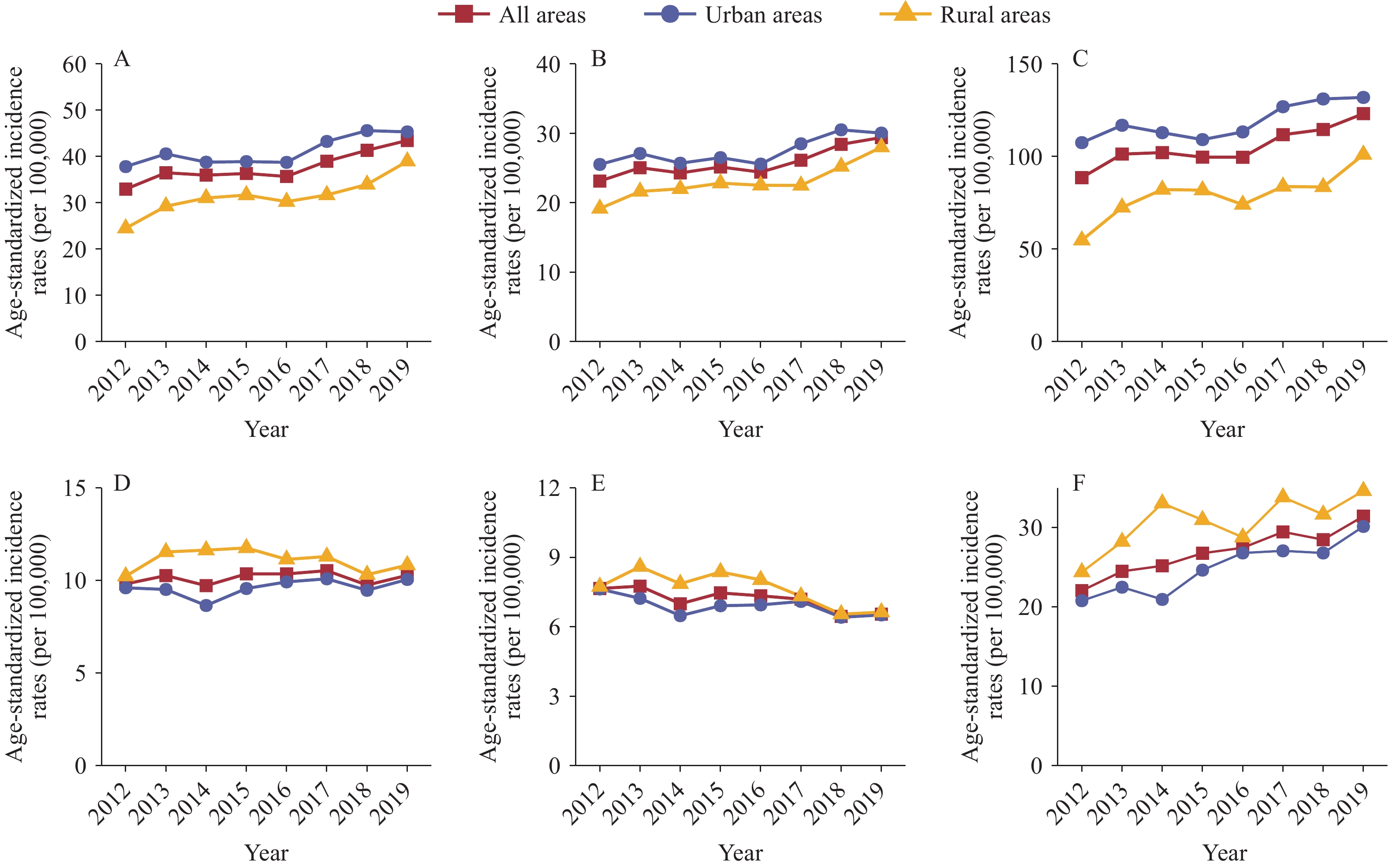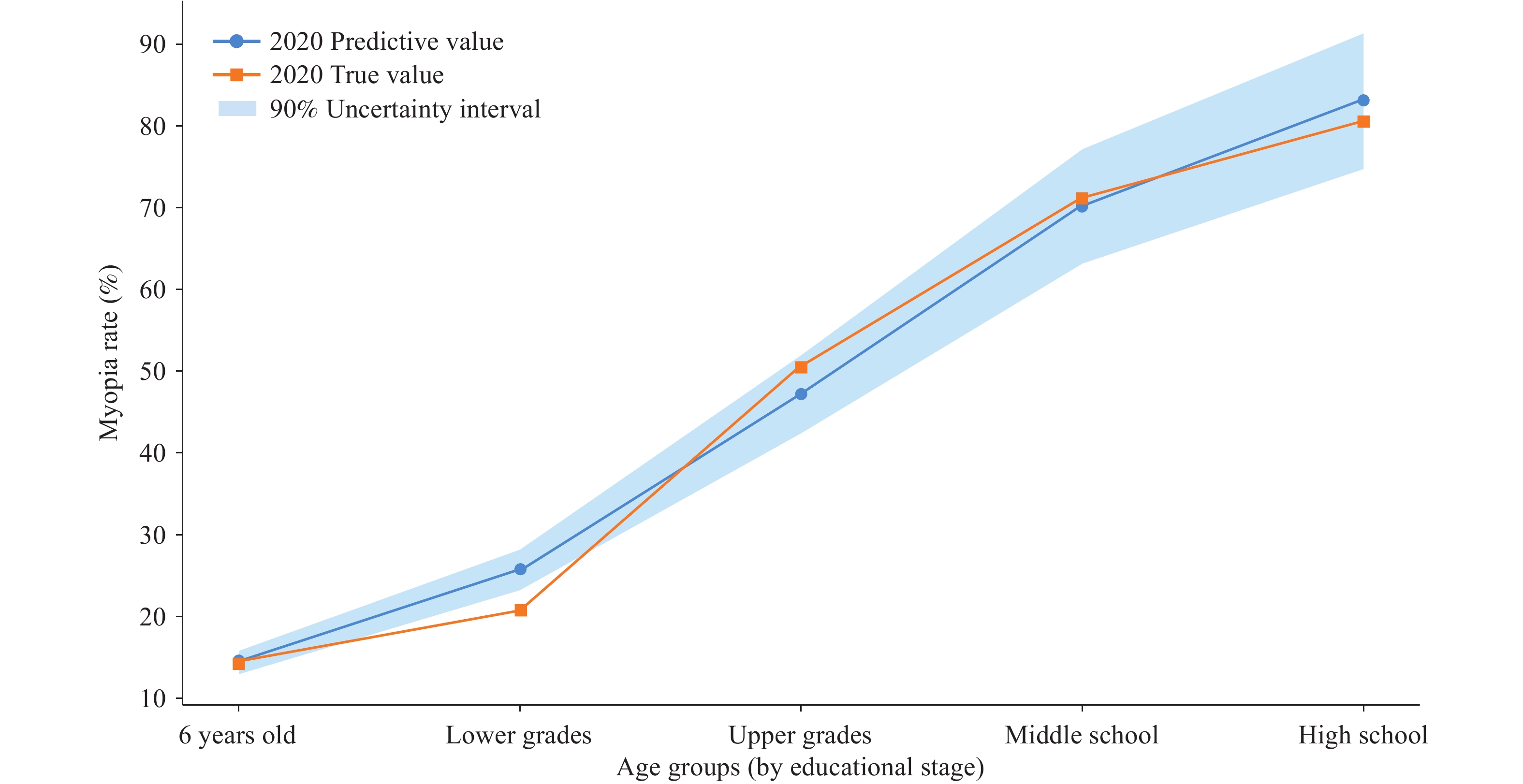2025 Vol. 7, No. 28
This study aims to report the epidemiological trends and provide updated estimates and lifetime risks for breast and cervical cancers among women in Guangdong province.
A Bayesian age-period-cohort model was applied to project incidence and mortality rates for 2023. The adjusted for multiple primaries (AMP) method was used to calculate the lifetime risks of developing and dying from breast and cervical cancer. Joinpoint analysis was employed to describe the temporal trends.
The age-standardized incidence rate (ASIR) of female breast cancer increased from 2012 to 2019 in Guangdong province, with a particularly pronounced increase noted in the rural areas. The ASIR for cervical cancer among women aged over 55 increased in both urban and rural areas, whereas a declining trend was observed among women under the age of 55. The age-standardized mortality rates (ASMRs) for both breast cancer and cervical cancer demonstrated upward trends among women aged over 55, while no significant trend in ASMR was found for women under 55 years. In 2023, the estimated incidence rates of breast cancer and cervical cancer would be 50.81/105 (ASIR would be 35.57/105) and 15.31/105 (ASIR would be 10.41/105) respectively, with corresponding mortality rates of 10.78/105 (ASMR would be 7.15/105) and 6.11/105 (ASMR would be 3.93/105) for these cancers.
Breast cancer continues to pose a significant threat to women’s health in both rural and urban areas of Guangdong, whereas cancer prevention and control programs for cervical cancer have shown positive impacts among the younger population. Greater emphasis should be placed on women aged over 55 to halt the rising mortality rates of both cancers within this population.
Myopia has emerged as a significant public health concern in China, particularly among children and adolescents. While evidence demonstrates the effectiveness of outdoor activity in preventing myopia, comprehensive economic analyses evaluating its role in reducing myopia-related diseases remain limited.
This study evaluates the cost-effectiveness of increasing outdoor activity across different educational stages in preventing myopia-related diseases among Chinese children and adolescents. The findings indicate that interventions implemented at all educational stages, with the exception of high school, are cost-effective strategies for reducing the myopia burden.
This research demonstrates the cost-effectiveness of increasing outdoor activity as a myopia prevention strategy among children and adolescents in China. It provides valuable insights for policymakers and healthcare planners to optimize resource allocation and develop targeted public health initiatives aimed at reducing the burden of myopia.
Non-suicidal self-injury (NSSI) has become increasingly common among adolescents, posing a significant public health concern that impacts both physical and mental well-being.
A total of 12.72% of adolescents aged 10–18 had engaged in NSSI in Jiangsu Province, China. A well-calibrated risk prediction model [AUC=0.800, 95% confidence interval (CI): 0.776, 0.823] identified 8 key predictors of NSSI: insomnia, emotional symptoms, cohesion of family environment, history of drinking alcohol, gender, conflict of family environment, conduct problems, and academic level.
This study underscores the importance of personalized prevention strategies for NSSI and highlights the necessity of implementing comprehensive behavioral interventions, such as providing mental health support, enhancing sleep quality, and cultivating supportive family environments.



 Subscribe for E-mail Alerts
Subscribe for E-mail Alerts CCDC Weekly RSS Feed
CCDC Weekly RSS Feed

